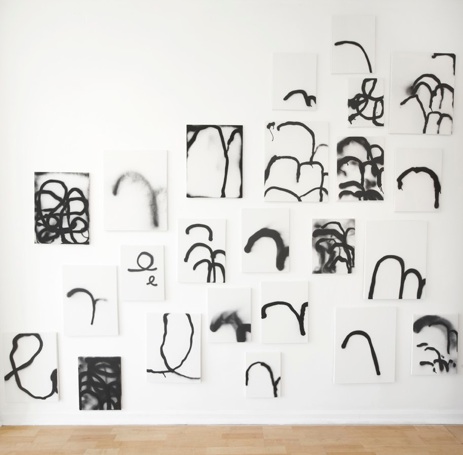If for Anne-Lise Coste, words are at times “too narrative, too emotional,†how does one address her latest exhibition at toomer labzda, titled m, l, e (on view until April 15) after the very units of words? In the moments leading up to her gallery talk last Thursday, the French New York-based artist acknowledged the difficulties of having to speak about her work. The paintings, she told one guest beforehand, were “easier to explain with gesture.”

The paintings of m, l, e have built upon the themes and notions present in Coste’s previous works; through limited palettes, they investigated the movement and repetition of writing as much as the product of the action itself. From there however, m, l, e pushed beyond its predecessors. In taking individual members of the alphabet as subjects, the paintings became both a retreat from and a step further into the notion of the written word. Each work summoned a hint of the motion of writing “m,†“l†or “e,†without the letter ever being fully legible. In their abstracted state, these characters lose their pure functionality. Coste’s show, arranged in a mosaic-like spread on the gallery’s walls, felt like a page of partially familiar text evading discrete meaning while evoking a meditative mood.
In fact, Coste considered the series an open text with its own properties beyond of the conventions of language. During her gallery talk, she read aloud from her essay “the freedom of the artist†that: “when i write m i feel free exactly because of that beyond. i write what i want, the way i want, no more grammar, syntax, coherence or logic of a raisoning or meaning diktat.â€
Yet her airy forms were not fully anarchic. They carried within them a gravity anchored in a broader history of writing and painting, and footnoted linguistics, literary criticism, abstract expressionism and graffiti. m, l, e, as a physical site of confluences and tensions, has carved a space in our ongoing discourse to exert its subtler vocabulary.